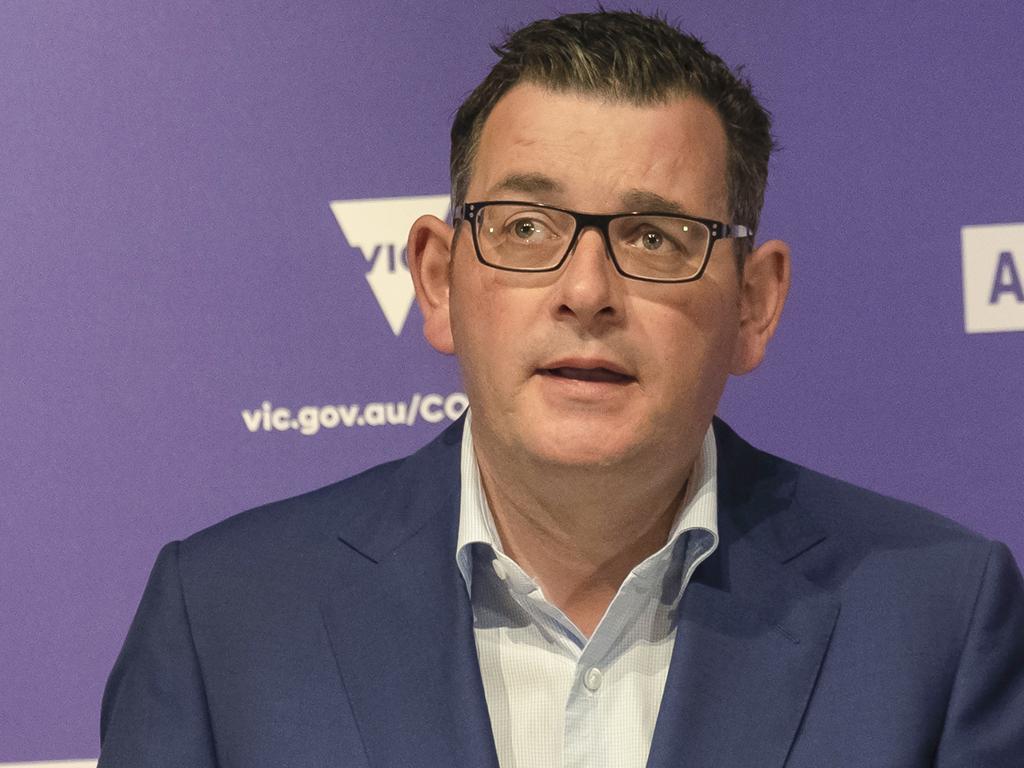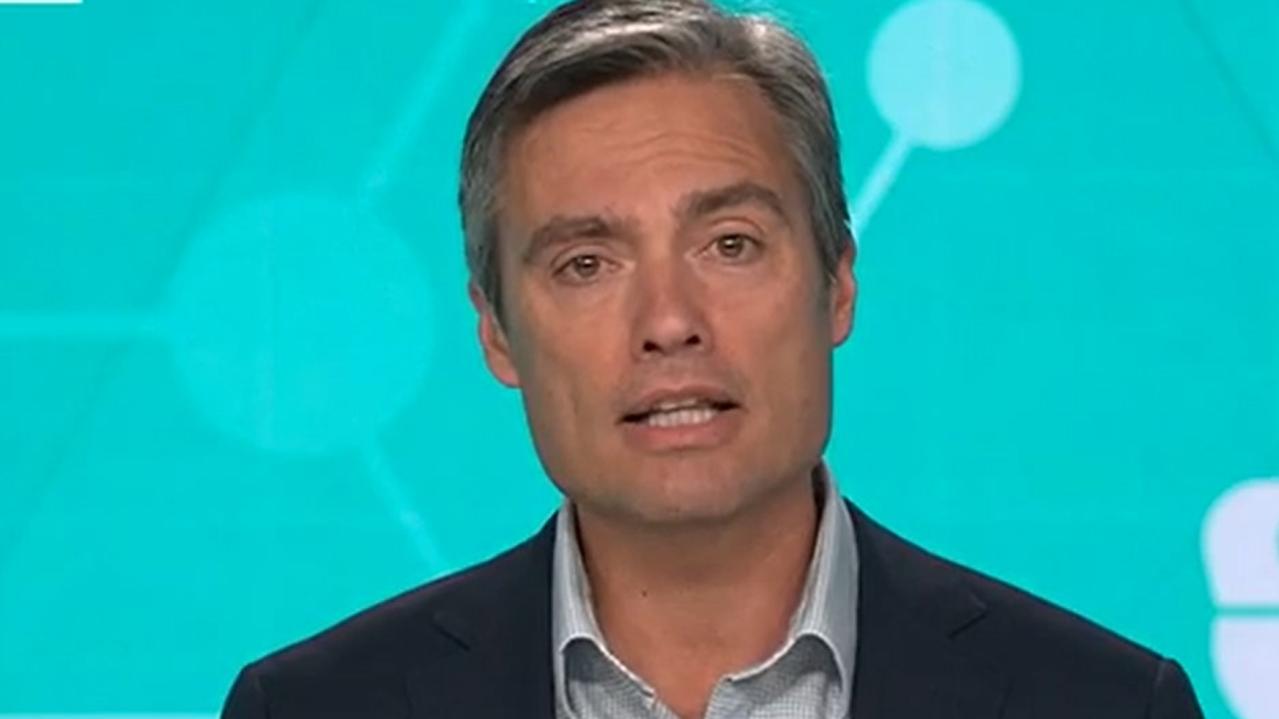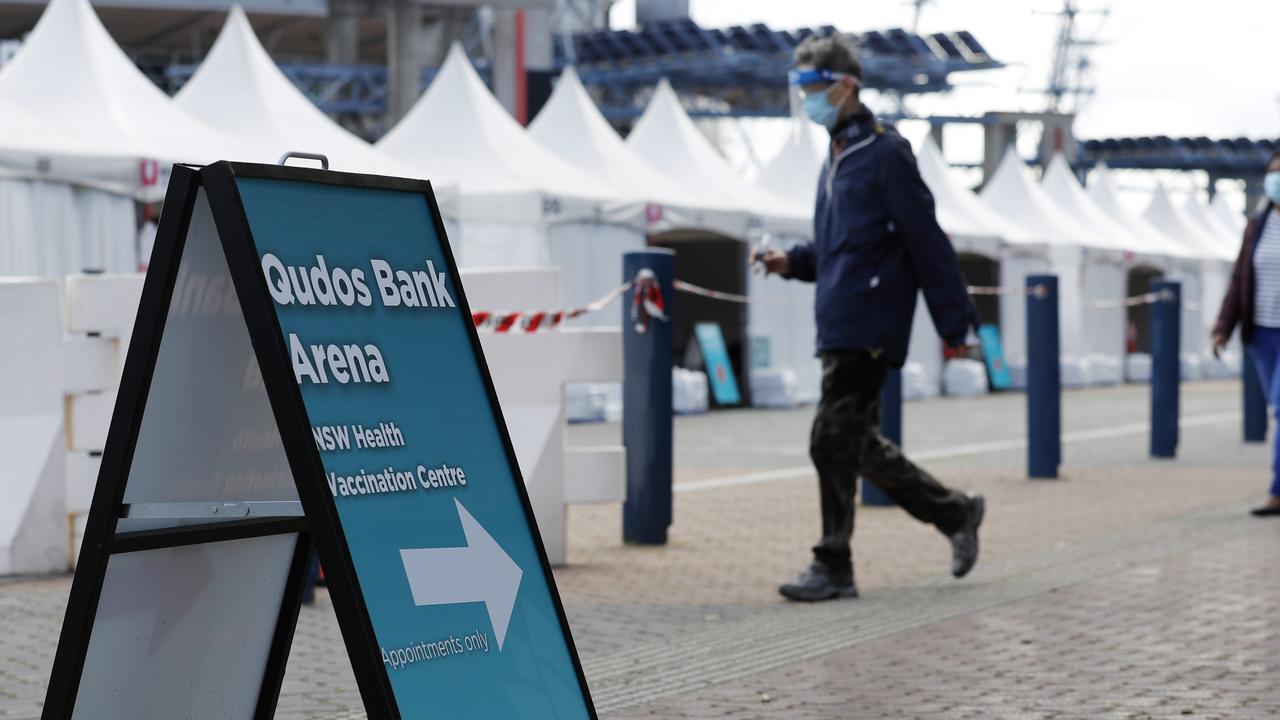Victorian hot spots identified as six local government areas
New outbreaks have been confirmed in some of Melbourne’s busiest suburbs, with a million Victorians asked to stay in their homes.

Old men stand around outside a bustling cafe in Melbourne’s inner north, drinking coffee and discussing the weekend.
In the Coburg pedestrian mall, just 10km north of the CBD, it’s business as usual despite the local government area being declared one of the best places in the country to catch COVID-19.
Trams carrying commuters into the city stream down Sydney Road, past the F45 where just today group fitness classes commenced after months of lockdown.
Coburg is in the heart of the Moreland Council local government area, one of six areas across Greater Melbourne declared no-go zones by the Victorian Government. Moreland is also home to Brunswick, a busy shopping district with a large multicultural population.
The other areas — Cardinia, Darebin, Brimbank, Hume and Casey — have a combined population of more than 1,185,000 people.
They include some of Melbourne’s busiest suburbs — Northcote, Broadmeadows, St Albans, Sunshine — and major shopping destinations including Northland and Fountain Gate.
In Casey, there are nine active cases. Cardinia has six, Brimbank has 10, Hume has nine, Darebin has three and Moreland has five. Total cases in the six areas are now up to almost 400.
A toddler from the Great Beginnings nursery in Reservoir has tested positive to the virus. Reservoir sits within the Darebin LGA.
The Australian Health Protection Principal Committee identified the six areas as responsible for the majority of new cases in Victoria and “strongly discouraged” travel to and from those areas amid fears of a second wave of infections.
The committee is the key decision making body for health emergencies and is comprised of all state and territory chief health officers and is chaired by the Australian Chief Health Medical Officer.
There were 16 new positive tests recorded today and 19 between Saturday and Sunday, Health Minister Jenny Mikakos said while announcing new pop-up testing clinics around Victoria.
She said public health authorities would begin doorknocking in Brimbank and Cardinia starting today.
The numbers are not huge, but daily rises of 25, 13, 18 and 21 over the previous four days are concerning because three out of every four of those cases was from community transmission.
I live in Darebin, one of the current #COVID19 hotspots. If needed, Stay at Home Directions will be targeted to these hotspot areas. I urge residents in Hume, Brimbank, Casey, Darebin, Moreland & Cardinia to limit their movements as much as possible to stay safe #springst 1/2
— Jenny Mikakos MP #StayHomeSaveLives (@JennyMikakos) June 21, 2020
And to put them in context, there were only six new cases in the whole of Australia on Sunday — five in NSW and one in Western Australia.
The surge in case numbers has forced Premier Daniel Andrews to increase restrictions from today. Under new rules in Victoria, gatherings in the home are limited to five people (plus the host family) and gatherings outdoors are restricted to 10 people.
Cafes, pubs and restaurants that were due to open to 50 patrons today can only have 20 paying customers at a time.
Australia’s chief medical officer Brendan Murphy says some Victorians have been complacent and Deputy Chief Medical Officer Nick Coatsworth says the Victorian situation has mostly been the result of large family gatherings.
He said how Victoria responds will provide valuable lessons for “how things are going to work into the future”.
Here’s what the State Government has to say about this advice tonight. Tougher localised stay-at-home rules are possible if case numbers keep climbing. @theheraldsun #springst #auspol https://t.co/ImRVoxy8nW pic.twitter.com/4ti4P5YLOd
— Tom Minear (@tminear) June 21, 2020
The ABC’s resident coronavirus expert Norman Swan says while many suburbs should be no-go zones for Victorians, the most likely place to catch the virus is actually in the family home.
“No question about that,” he told ABC News Breakfast on Monday.
“It’s been a recurrent theme in our conversations in the last few weeks. And where could you possibly be more relaxed than at home? If you can’t relax at home, where can you relax? And what this has shown is that home is actually one of the most dangerous places for this virus.”
The Victorian spike has spooked some of the other states, including Queensland, which had been working to reopen its borders to interstate travel on July 10.
“The last thing we want to do is lift the borders, have lots of people come here for school holidays, spread coronavirus in our state, and then force us to go backwards on restrictions,” Queensland Health Minister Steven Miles told reporters on Sunday.
“Clearly what’s happening in Victoria will be a matter we will need to take into account in those considerations.”
Queensland Premier Annastacia Palaszczuk said this morning that “there is a lot of active community transmission happening in Victoria and I hope that Victoria can get this community transmission under control.”
She said her government is concerned.
“I have concerns about Victoria. The Health Minister has concerns about Victoria.

“When I was at the hospital on Saturday night with my family, people were stopping me and saying they were very concerned about community transmission. They were very concerned about Victoria. That was unprompted — people were coming up to me.”
In order to help track the community transmission in Victoria, South Australia has sent a team of experts, Health Minister Stephen Wade announced on Sunday.
“The State Government is in talks with the Victorian Government about how we can assist their COVID-19 effort,” Mr Wade said.
“The first element will be the immediate secondment of a small group of public health specialists, who will support their Victorian colleagues to trace and isolate the contacts of cases.
“The health of South Australians is our utmost priority.
“By helping our eastern neighbours nip community outbreaks in the bud, we can mitigate the health and economic threat to our community.”




